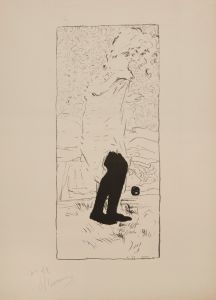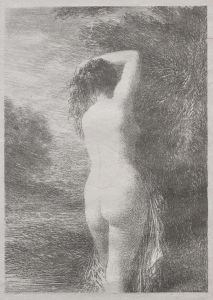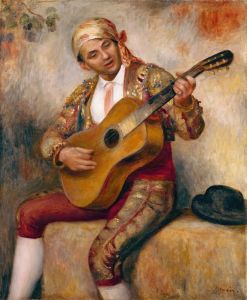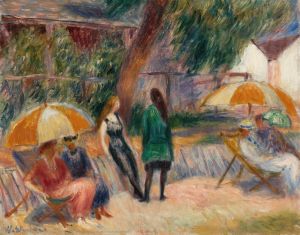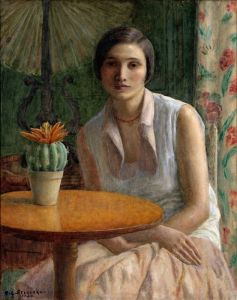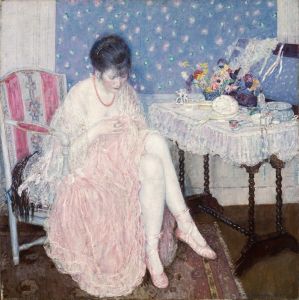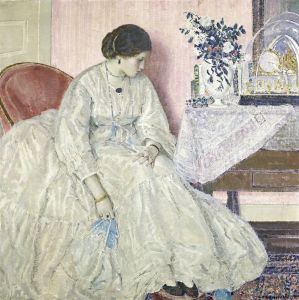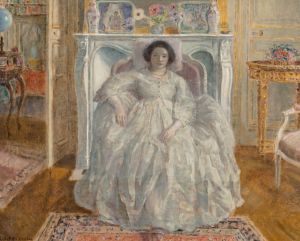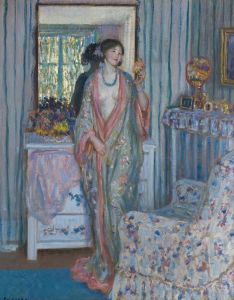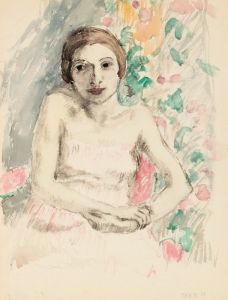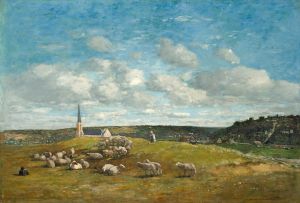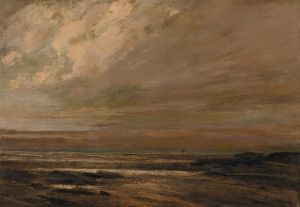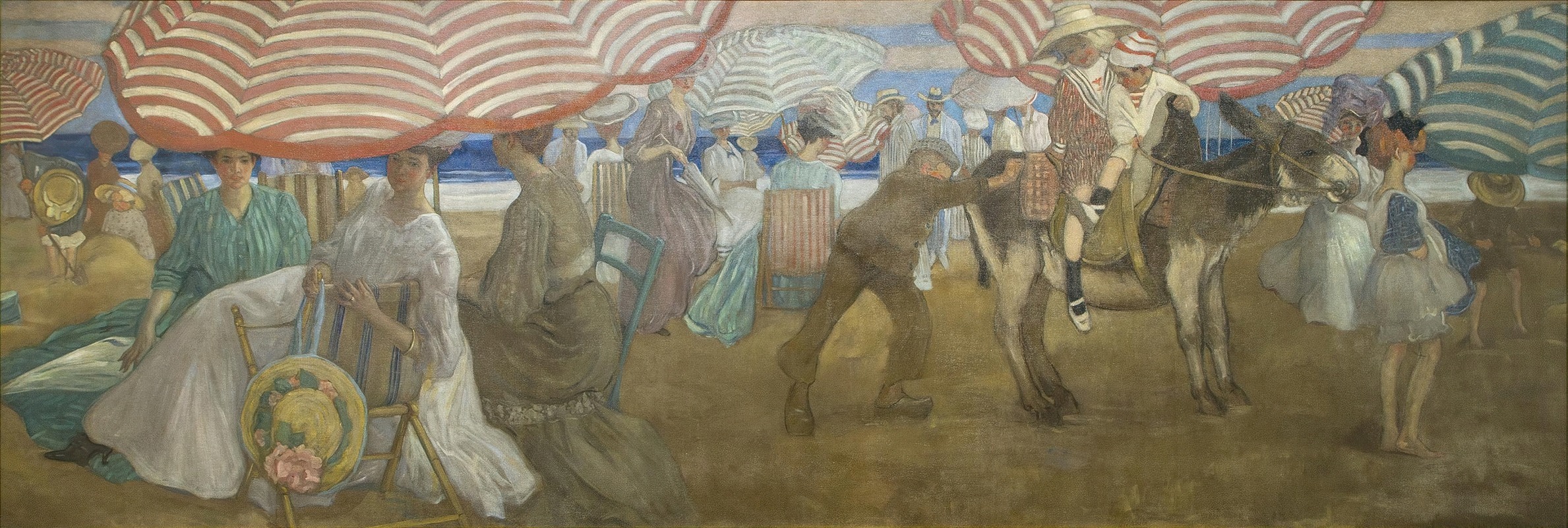
Afternoon at the Beach
A hand-painted replica of Frederick Carl Frieseke’s masterpiece Afternoon at the Beach, meticulously crafted by professional artists to capture the true essence of the original. Each piece is created with museum-quality canvas and rare mineral pigments, carefully painted by experienced artists with delicate brushstrokes and rich, layered colors to perfectly recreate the texture of the original artwork. Unlike machine-printed reproductions, this hand-painted version brings the painting to life, infused with the artist’s emotions and skill in every stroke. Whether for personal collection or home decoration, it instantly elevates the artistic atmosphere of any space.
Frederick Carl Frieseke was an American Impressionist painter, known for his depictions of leisurely scenes and his use of light and color. One of his notable works is "Afternoon at the Beach," which exemplifies his style and thematic focus. Frieseke was part of the Giverny Colony, a group of American artists who worked near Claude Monet in Giverny, France. This proximity to Monet and the influence of French Impressionism are evident in Frieseke's work, including "Afternoon at the Beach."
"Afternoon at the Beach" captures a serene and idyllic scene, typical of Frieseke's interest in depicting moments of leisure and relaxation. The painting showcases his mastery in handling light and shadow, a hallmark of Impressionist art. Frieseke often painted en plein air, or outdoors, which allowed him to capture the natural light and its effects on the landscape and figures. This technique is evident in "Afternoon at the Beach," where the play of sunlight and shadow creates a dynamic and lively atmosphere.
The composition of "Afternoon at the Beach" reflects Frieseke's interest in the human figure and its interaction with the environment. The figures in the painting are often depicted in a relaxed pose, enjoying the tranquility of the beach setting. Frieseke's use of color is particularly noteworthy; he employs a palette that captures the vibrancy of the beach scene, with soft blues, greens, and sandy tones that evoke the feeling of a warm, sunny day.
Frieseke's work is often associated with the decorative arts, and "Afternoon at the Beach" is no exception. The painting's composition and color scheme demonstrate his interest in creating visually pleasing and harmonious images. This decorative quality is a significant aspect of Frieseke's style, setting him apart from other Impressionists who focused more on the spontaneity and immediacy of their brushwork.
Throughout his career, Frieseke was celebrated for his ability to blend American and French Impressionist techniques, and "Afternoon at the Beach" is a testament to this synthesis. His work was well-received in both Europe and the United States, and he exhibited regularly at the Paris Salon and with the Société Nationale des Beaux-Arts. In America, his paintings were shown at the National Academy of Design and the Art Institute of Chicago, among other venues.
"Afternoon at the Beach" is a reflection of Frieseke's broader artistic goals: to capture the beauty of everyday life and the fleeting effects of light and color. His work continues to be appreciated for its aesthetic qualities and its contribution to the development of American Impressionism. Today, Frieseke's paintings, including "Afternoon at the Beach," are held in various public and private collections, where they continue to be studied and admired for their technical skill and artistic vision.





